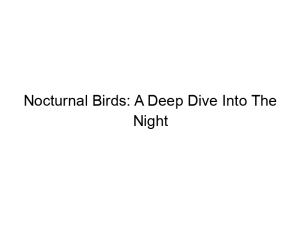Falconry, a sport dating back millennia, involves the training and use of birds of prey, such as falcons, hawks, eagles, and owls, to hunt. The Fascinating History of Falconry: From Ancient Times to Today is a rich tapestry woven with threads of tradition, skill, and a deep connection between human and animal. This article will explore falconry’s origins, its evolution across cultures, its modern practice, and the ethical considerations surrounding it. We’ll delve into the techniques involved, the different types of birds used, and the lasting appeal of this ancient art.
Falconry’s origins are shrouded in the mists of antiquity, with evidence suggesting its practice in Mesopotamia as far back as 4000 years ago. Depictions on ancient Sumerian cylinder seals show men with falcons, indicating a deep-rooted association. This early falconry likely
served a practical purpose, assisting hunters in capturing game for sustenance.
Ancient Egypt: Divine Birds of Prey
The Egyptians revered birds of prey, incorporating them into their mythology and art. Falcons, in particular, were associated with the sun god Horus and held a position of high esteem. Hieroglyphs and tomb paintings portray falconers, demonstrating the integration of falconry into Egyptian society. The hunting of waterfowl with trained birds was common, utilizing the falcon’s speed and hunting prowess.
Falconry in Persia and the Middle East
Persian falconry, dating back centuries, developed into a sophisticated and highly regarded art form. The practice was not only for hunting but also incorporated into social customs and status. Elaborate equipment, including ornate saddles and jesses (leather straps attached to the bird’s legs), were used, reflecting the importance placed on falconry. The art of falconry, passed down through generations, became a hallmark of Persian nobility.
Falconry’s Spread Across Continents
Arrival in Europe: A Royal Pursuit
Falconry arrived in Europe through trade routes and interactions with the Middle East. By the Middle Ages, it had become associated with nobility and royalty, with emperors, kings, and other high-ranking officials practicing the art. Laws were enacted to regulate falconry, highlighting its prestigious status. The hunting of game like hares, rabbits and pheasants became a prominent feature.
Falconry in Asia: Diverse Techniques and Traditions
Across Asia, falconry developed in diverse ways depending on the specific bird species and hunting environments. In Japan, the goshawk was the preferred bird, whereas in China, various raptors were used for hunting different game. Each country has unique falconry traditions, reflecting both the local environment and cultural practices. The Mongolian steppe, for example, lends itself to hunting with eagles.
The Americas: Indigenous Traditions
Indigenous peoples of North and South America also had their own long-standing traditions of using birds of prey for hunting. Different techniques were employed and different birds used.
The Techniques of Falconry
Training the Birds of Prey
Training a bird of prey is a meticulous and time-consuming process demanding patience, knowledge, and understanding of avian behavior. The process involves imprinting young birds with human contact, teaching them to respond to commands, and refining their hunting skills through repeated practice. The bond between falconer and bird is crucial for success.
Equipment Used in Falconry
Various pieces of equipment are employed in falconry, all designed to assist the falconer in handling and training their bird. These include jesses (leather straps), bells (for tracking), a hood (to calm the bird), and a lure (for attracting the bird).
Different Hunting Techniques
Falconry employs several hunting techniques, varying depending on the type of bird and prey. These range from creance training (tethering the bird to a long line) to free flying, where the bird hunts independently and returns to the falconer.
The Birds of Prey: A Diverse Cast
Falcons: Speed and Precision
Falcons, known for their exceptional speed and aerial agility, are among the most sought-after birds in falconry. Peregrine falcons, with their incredible diving speed, are particularly prized. Different falcon species are suited to different types of prey.
Hawks: Versatility and Adaptability
Hawks are renowned for their versatility and adaptability, suitable for hunting various prey. Red-tailed hawks, Cooper’s hawks, and goshawks are all popular choices in falconry, each with its unique strengths and hunting styles.
Eagles: Majestic Hunters
Eagles, with their powerful build and impressive size, are often employed in falconry for hunting larger prey. The Golden Eagle, for instance, can take down substantial game animals.
Owls: Nighttime Prowess
Owls, masters of the nighttime hunt, also find a place in falconry, although their use is less common compared to diurnal birds of prey. Certain owl species, known for their silent flight and hunting abilities, are trained for specialized purposes.
The Modern Practice of Falconry
Falconry Clubs and Organizations
Today, falconry is practiced globally, supported by a network of clubs and organizations. These groups promote the sport, provide education, maintain ethical standards, and encourage responsible falconry practices. They offer training and mentorship for newcomers.
Conservation Efforts and Falconry
Falconry has played a role in conservation efforts by raising awareness about birds of prey and their habitats. Falconers are often involved in breeding programs and reintroduction efforts for endangered species. The responsible management of birds of prey is paramount.
Ethical Considerations and Responsible Falconry
Ethical considerations are central to modern falconry. The welfare of the birds is paramount, and responsible falconers prioritize the birds’ health, safety, and well-being. Sustainable hunting practices are essential, along with strict adherence to regulations and laws.
The Challenges of Falconry
Time Commitment and Dedication
Falconry demands a significant time commitment and unwavering dedication. Training and caring for a bird of prey requires consistent effort, meticulous attention to detail, and a genuine understanding of avian behavior. It’s a relationship requiring patience and care.
Cost and Resources
Falconry can be a costly pursuit, requiring investment in equipment, training, food, veterinary care, and licensing. The financial burden should be considered before taking up the sport.
Regulation and Licensing
Falconry is subject to regulations and licensing requirements that vary by country and region. Falconers must comply with all applicable laws to practice legally and responsibly. Failure to do so can lead to legal ramifications.
The Allure and Appeal of Falconry
A Connection with Nature
Falconry provides a unique opportunity for a profound connection with nature. It immerses the practitioner in the natural world, demanding observation skills and an understanding of ecological relationships.
A Test of Skill and Patience
Falconry is a challenging and rewarding pursuit, testing the falconer’s skill, patience, and dedication. The complexities of training a bird of prey, understanding its behavior, and mastering the techniques of the sport offer constant learning and satisfaction.
A Timeless Tradition
Falconry represents a remarkable continuity, connecting modern practitioners to a tradition that spans millennia. It is a living testament to the enduring human-animal bond and the timeless appeal of a centuries-old art form.
Frequently Asked Questions
What is the history of falconry?
Falconry’s history stretches back thousands of years, with evidence suggesting its practice in Mesopotamia as early as 4000 BCE. It spread across the globe, becoming deeply entwined with various cultures and eventually associated with nobility and royalty in several regions. Today, it continues as both a sport and a means of preserving cultural heritage.
What birds are used in falconry?
A variety of birds of prey are utilized in falconry. Falcons (Peregrine, Gyrfalcon, etc.), hawks (Red-tailed, Cooper’s, Goshawk), eagles (Golden Eagle), and even some owls are trained for hunting. The specific bird choice depends on the type of game pursued and the region’s ecological conditions.
How difficult is it to learn falconry?
Falconry requires extensive training, patience, and a deep understanding of avian behavior. It’s not a quick skill to learn; considerable time and dedication are necessary to master the techniques involved in training and handling the birds. Mentorship and guidance from experienced falconers are highly recommended.
Is falconry expensive?
Yes, falconry is a relatively expensive hobby. The costs involved include acquiring the bird, specialized equipment (jesses, hoods, lures), veterinary care, licensing, and ongoing food expenses. The total cost will depend on the type of bird and equipment.
Is falconry legal everywhere?
The legality of falconry varies significantly depending on the country and region. Many areas have strict regulations, requiring licenses and permits before engaging in the sport. It’s crucial to understand and comply with all local laws and regulations related to falconry.
What are the ethical considerations of falconry?
Ethical considerations are of paramount importance in modern falconry. The well-being and health of the birds are prioritized, ensuring proper care, veterinary attention, and humane handling. Sustainable hunting practices, compliance with regulations, and avoiding practices that harm the birds or their natural habitats are all vital ethical aspects.
Final Thoughts
Falconry’s captivating history, extending across millennia and continents, reflects humankind’s enduring fascination with birds of prey. From its ancient roots in Mesopotamia to its modern practice worldwide, falconry exemplifies the intricate relationship between humans and animals. This ancient art is not merely a sport; it is a tradition, a skill, a science, and a deep connection to the natural world. Whether you are a seasoned falconer or simply curious about this unique practice, the world of falconry offers a journey into the past and a window into the present, reminding us of our place within the ecological tapestry. While it demands dedication, training, and resources, the rewards – a deep connection with nature, a mastery of ancient skills, and a bond with a magnificent creature – are unparalleled.




